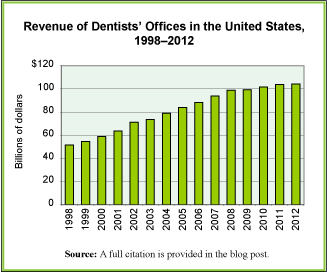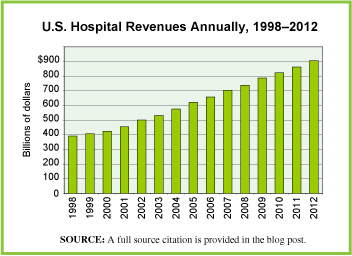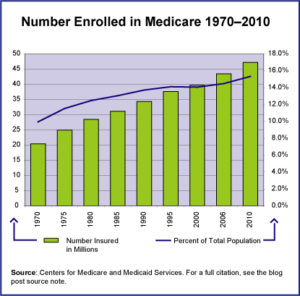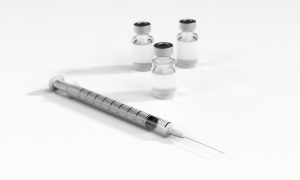
The two most popular types of minimally-invasive cosmetic treatments in the United States are botulinum toxin type A and soft tissue filler injections. Both are used to temporarily reduce or eliminate wrinkles. Botulinum toxin type A — commonly known as Botox, but other brand names include Dysport and Xeomin — is a neurotoxin derived from bacteria. It blocks nerve signals to the muscle in which it’s injected. The muscle is unable to contract thereby eliminating wrinkles. It’s most commonly used to smooth frown lines, forehead creases, and crows feet. Soft tissue fillers, also known as dermal fillers, are gel-like substances injected under the skin to smooth out wrinkles. They’re also used to enhance lips and improve symmetry among facial features. The U.S. Food and Drug Administration has approved several types of fillers: hyaluronic acid, calcium hydroxylapatite, poly-l-lactic acid, and polymethylmethacrylate. Hyaluronic acid and calcium hydroxylapatite are naturally found in skin and bones, respectively. Poly-l-lactic acid and polymethylmethacrylate are synthetic, biocompatible substances. Some brand names include Juvéderm, Radiesse,
Today’s market size shows the amount spent on injectable cosmetic treatments in 2016 and forecast for 2025 worldwide. In the United States, more than 10 million injectable cosmetic treatments were performed in 2018. Botulinum toxin type A procedures were the most popular; 7.4 million were performed, up 5.4% from 2016. Nearly 2.7 million soft tissue filler procedures were performed in 2018, a 2.9% increase from 2016. While women still comprise the vast majority of patients, globally an estimated 15% of injectable cosmetic treatments are performed on men.
Geographic reference: WorldYear: 2016 and 2025
Market size: $6.5 billion and $17.2 billion, respectively
Sources: “Facial Injectables Market Analysis by Product (Collagen, Hyaluronic Acid, Botulinum Toxin Type A, Calcium Hydroxylapatite, Polymer Fillers), by Application (Aesthetics, Therapeutics), by Region, and Segment Forecasts, 2018 – 2025,” Grand View Research Press Release, May 2017 available online here; “Global Facial Injectables Market Size Worth $17.2 Billion By 2025,” Grand View Research Press Release, May 2017 available online here; 2018 National Plastic Surgery Statistics, American Society of Plastic Surgeons, March 2019 available online here; 2017 Plastic Surgery Statistics Report, American Society of Plastic Surgeons, 2018 available online here; “What Is Botulinum Toxin Type A?” American Society of Plastic Surgeons available online here; “Hold Still,” The Economist, February 9, 2019, page 22; “Injectable Fillers Guide,” American Board of Cosmetic Surgery available online here.
Image source: qimono, “syringe-shot-medicine-bottle-1884758,” Pixabay, December 6, 2016 available online here.

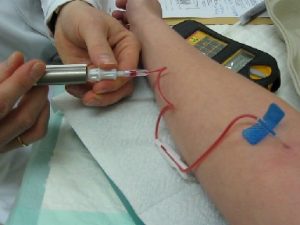
 According to recent research, more than 60% of the 1.8 billion Muslims around the world consume nutraceuticals in some form daily.1 Nutraceuticals are products that provide health benefits in addition to their nutritional value. They are thought to improve overall health, delay the aging process, prevent chronic diseases and increase life expectancy. They can be in the form of fortified foods and beverages or dietary supplements. In 2016 the global nutraceutical market was valued at nearly $200 billion. Not all nutraceuticals are halal, however.
According to recent research, more than 60% of the 1.8 billion Muslims around the world consume nutraceuticals in some form daily.1 Nutraceuticals are products that provide health benefits in addition to their nutritional value. They are thought to improve overall health, delay the aging process, prevent chronic diseases and increase life expectancy. They can be in the form of fortified foods and beverages or dietary supplements. In 2016 the global nutraceutical market was valued at nearly $200 billion. Not all nutraceuticals are halal, however. Intraocular lenses are artificial lenses that are implanted in the eyes to replace a person’s natural lenses that were damaged by cataracts or another eye disease. Monofocal-type intraocular lenses captured the largest share of the market in 2015. Why? They cost less than other types of intraocular lenses, insurance companies are more likely to adequately reimburse providers for implanting them, and monofocal lenses have fewer post-operative complications than other types of lenses according to the source.
Intraocular lenses are artificial lenses that are implanted in the eyes to replace a person’s natural lenses that were damaged by cataracts or another eye disease. Monofocal-type intraocular lenses captured the largest share of the market in 2015. Why? They cost less than other types of intraocular lenses, insurance companies are more likely to adequately reimburse providers for implanting them, and monofocal lenses have fewer post-operative complications than other types of lenses according to the source. Skin grafting is a surgical procedure in which healthy skin is removed from one part of the body and attached to another part of the body that was damaged by burns, trauma, infection or disease. While skin grafting has been done for centuries, first recorded around 600 BC in India, most modern skin grafting has been done in the past century and a half. Since the 1870s and 1880s, the depth of the donor skin has been recognized as a major factor in healing. Back then surgeons would freehandedly remove the skin using a knife, the depth of the donor skin controlled by varying the angle of the knife. Starting in the early 1900s, various knives with attached guards that could be calibrated in order to more accurately measure the depth of the donor skin were used. In 1939, a semi-cylindrical calibrated dermatome was invented by Dr. Earl Padgett and George J. Hood. Until this time, only expert plastic surgeons would be able to cut skin grafts, but now any trained surgeon was able to do so. This was a major advancement in the treatment of wounded soldiers during World War II. Since then various technological advancements have improved the accuracy of the dermatomes surgeons use today.
Skin grafting is a surgical procedure in which healthy skin is removed from one part of the body and attached to another part of the body that was damaged by burns, trauma, infection or disease. While skin grafting has been done for centuries, first recorded around 600 BC in India, most modern skin grafting has been done in the past century and a half. Since the 1870s and 1880s, the depth of the donor skin has been recognized as a major factor in healing. Back then surgeons would freehandedly remove the skin using a knife, the depth of the donor skin controlled by varying the angle of the knife. Starting in the early 1900s, various knives with attached guards that could be calibrated in order to more accurately measure the depth of the donor skin were used. In 1939, a semi-cylindrical calibrated dermatome was invented by Dr. Earl Padgett and George J. Hood. Until this time, only expert plastic surgeons would be able to cut skin grafts, but now any trained surgeon was able to do so. This was a major advancement in the treatment of wounded soldiers during World War II. Since then various technological advancements have improved the accuracy of the dermatomes surgeons use today.  Nearly 45% of blood donors are over the age of 50 and 60% are over the age of 40. According to Marie Forrestal, president of the Association of Donor Recruitment Professionals, those who grew up during World War II and their children saw giving blood as a civic duty. They realized the importance of the country keeping an adequate supply of blood on hand. People in their 20s or 30s, however, are less likely to donate than other age groups, and as a result, as the older donors age and can no longer donate, there are fewer younger people to take their place.
Nearly 45% of blood donors are over the age of 50 and 60% are over the age of 40. According to Marie Forrestal, president of the Association of Donor Recruitment Professionals, those who grew up during World War II and their children saw giving blood as a civic duty. They realized the importance of the country keeping an adequate supply of blood on hand. People in their 20s or 30s, however, are less likely to donate than other age groups, and as a result, as the older donors age and can no longer donate, there are fewer younger people to take their place.  Traditional Chinese medicine (TCM) is a 2,500-year-old system of diagnosis and treatment that emphasizes the prevention of diseases. TCM medicines are tailored to each individual and may need to be altered from time to time, therefore, patients are encouraged to see their TCM doctor frequently. After the fall of the Qing dynasty in 1911, TCM was regarded as superstition but in recent years the practice has seen an increase in popularity. An interest in preventative medicine as a way to avoid costly trips to the hospital as well as President Xi Jinping’s endorsement of it, calling it “the gem of Chinese traditional science,” have contributed to its popularity. In 2015 there were 452,000 licensed practitioners in China, an increase of 50% from four years prior. One-third of China’s pharmaceutical market consists of TCM medicines approved by the government.
Traditional Chinese medicine (TCM) is a 2,500-year-old system of diagnosis and treatment that emphasizes the prevention of diseases. TCM medicines are tailored to each individual and may need to be altered from time to time, therefore, patients are encouraged to see their TCM doctor frequently. After the fall of the Qing dynasty in 1911, TCM was regarded as superstition but in recent years the practice has seen an increase in popularity. An interest in preventative medicine as a way to avoid costly trips to the hospital as well as President Xi Jinping’s endorsement of it, calling it “the gem of Chinese traditional science,” have contributed to its popularity. In 2015 there were 452,000 licensed practitioners in China, an increase of 50% from four years prior. One-third of China’s pharmaceutical market consists of TCM medicines approved by the government.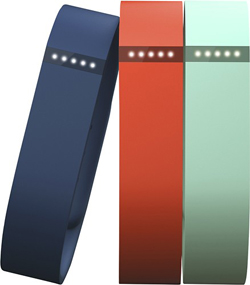 The market for smart wearable healthcare devices is one part of the larger smart wearables market as a whole. The term wearables is used to refer to any electronic device, usually small, that can be worn relatively easily during the normal activities of life. Examples include wristbands such as the Fitbit, smart watches, clip on devices like pedometers and even clothing into which sensors have been sewn.
The market for smart wearable healthcare devices is one part of the larger smart wearables market as a whole. The term wearables is used to refer to any electronic device, usually small, that can be worn relatively easily during the normal activities of life. Examples include wristbands such as the Fitbit, smart watches, clip on devices like pedometers and even clothing into which sensors have been sewn.